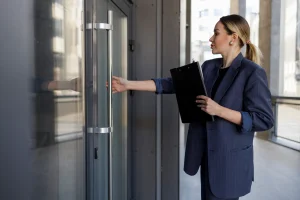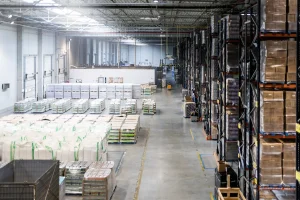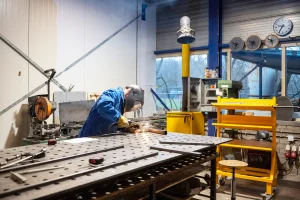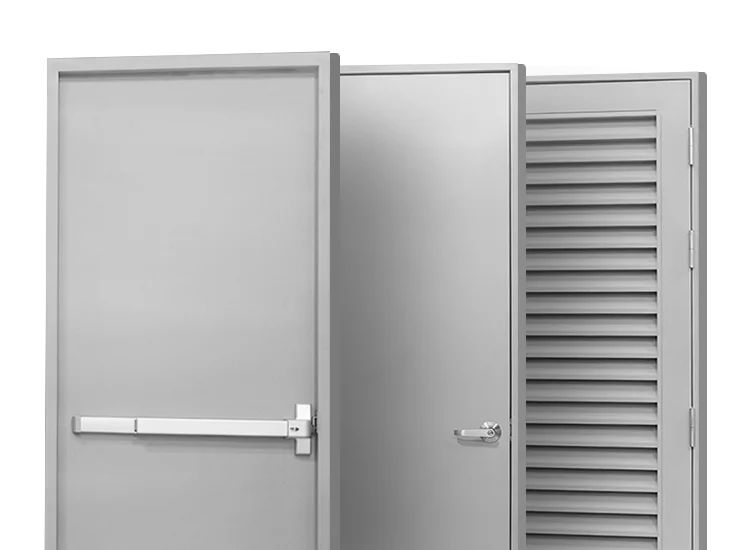As building landscapes continue evolving, ventilation plays a crucial role in maintaining the health, comfort, and efficiency of commercial spaces. Good ventilation not only improves indoor air quality; it also enhances energy efficiency and promotes a productive work environment. With increasing awareness of health risks related to poor air circulation, building managers are looking for ways to implement effective ventilation strategies that ensure occupant well-being.
This guide will explore why good ventilation is essential for commercial buildings, the types of systems available, and the dangers of neglecting proper airflow. By reading further, you’ll gain insight into the importance of a well-ventilated building, practical solutions to improve ventilation, and the risks that come with poor air quality.
The Critical Role of Ventilation in Commercial Buildings
Ventilation in commercial buildings is much more than simply moving air in and out of spaces. Instead, it also plays a critical role in maintaining indoor comfort, energy efficiency, and the overall health of occupants. Proper ventilation ensures the air remains fresh, reduces the buildup of harmful pollutants, and helps manage indoor temperatures.
When implemented effectively, here are the benefits of ensuring proper ventilation in commercial buildings:
- Improved Air Quality – Proper ventilation reduces indoor pollutants, such as CO2, dust, and allergens, ensuring healthier breathing air for occupants.
- Temperature Regulation – Ventilation helps maintain consistent indoor temperatures, preventing overheating or excessive cooling.
- Moisture Control – By balancing humidity levels, ventilation prevents issues such as mold growth and material deterioration.
- Enhanced Energy Efficiency – Ventilation supports HVAC systems by optimizing air circulation, reducing the strain on air conditioning units.
- Occupant Comfort and Productivity – Good airflow contributes to a more comfortable indoor environment, boosting occupant productivity and well-being.
How Ventilation Enhances Air Conditioning Efficiency
Ventilation plays a critical role in improving the efficiency of air conditioning systems in commercial buildings. By ensuring the proper flow of fresh air, ventilation helps reduce the workload on HVAC units, which would otherwise need to work harder to regulate indoor temperatures. When there’s inadequate ventilation, the air becomes stale and humid, forcing air conditioners to use more energy to maintain desired temperatures.
Moreover, proper ventilation prevents the buildup of heat and moisture in enclosed spaces, which can overburden cooling systems. Ventilation systems reduce this strain by ensuring a steady exchange of air, resulting in lower energy consumption and longer lifespan for HVAC units. By improving airflow, building managers optimize their cooling systems and greatly reduce energy costs.

Exploring the Main Types of Ventilation Systems in Buildings
Ventilation systems are an essential component of modern commercial buildings, offering various methods to regulate airflow and maintain indoor air quality. Depending on the building design and requirements, these systems may be customized to enhance both comfort and efficiency.
Natural Ventilation
Natural ventilation relies on wind and thermal buoyancy to drive fresh air through a building. This method typically involves strategically placed windows, vents, and louvers that allow air to flow naturally without the need for mechanical equipment. It’s an energy-efficient option, often utilized in buildings with open spaces or in areas with moderate climates. However, natural ventilation can be less effective in highly polluted areas or where weather conditions are extreme.
Mechanical Ventilation
Mechanical ventilation uses fans, ducts, and other equipment to control the airflow in and out of a building. This method offers precise control over indoor air quality, as it has the ability to filter pollutants and regulate humidity levels. Mechanical systems are essential in buildings where natural ventilation alone cannot provide adequate air exchange. Despite higher energy costs, the consistent air circulation it offers makes it a popular choice for large commercial buildings.
Hybrid Ventilation Systems
Hybrid ventilation combines elements of both natural and mechanical systems. It typically operates in natural mode when outdoor conditions are favorable but switches to mechanical ventilation when needed. This system offers flexibility and decrease in energy consumption by taking advantage of natural airflow when possible. Hybrid systems are ideal for commercial buildings that require adaptable solutions based on varying climate conditions and occupancy levels.
The Risks and Consequences of Poor Ventilation
Poor ventilation can have considerable adverse effects on commercial buildings, impacting not only the structure but also the health and comfort of its occupants. Below are the major risks associated with inadequate ventilation:
- Health Issues – Poor ventilation leads to the buildup of pollutants and allergens, increasing the risk of respiratory issues and illnesses.
- Increased Energy Costs – Insufficient airflow forces HVAC systems to work harder, resulting in higher energy consumption and expenses.
- Moisture and Mold Growth – Without proper ventilation, moisture accumulates, leading to mold, mildew, and structural damage.
- Reduced Productivity – Poor air quality can make employees feel sluggish and uncomfortable, lowering overall productivity.
- Regulatory Non-compliance – Buildings that fail to meet ventilation standards may face legal repercussions and fines.

Effective Strategies to Enhance Ventilation in Commercial Buildings
Ventilation is a critical aspect of building design that directly impacts indoor air quality, energy efficiency, and occupant comfort. As commercial buildings often house large numbers of people for extended periods, ensuring proper airflow is vital for both health and productivity. Effective ventilation systems can help remove contaminants, regulate temperature, and maintain a comfortable working environment.
Beyond immediate benefits, improved ventilation also reduces energy consumption and extends the lifespan of HVAC systems. Implementing the right strategies makes a world of difference in creating healthier, more efficient spaces. Below are seven proven strategies to enhance ventilation in commercial buildings:
1. Optimize natural ventilation.
Maximizing natural ventilation is one of the most energy-efficient ways to improve airflow in commercial buildings. By strategically positioning windows, vents, and louvers, natural air currents can move fresh outdoor air through the building, displacing stale indoor air.
Natural ventilation works best in open-plan spaces and buildings located in areas with moderate climates. Not only does this reduce reliance on mechanical systems, but it also creates a more pleasant and airy environment. However, it’s important to consider outdoor air quality and weather conditions when relying on this method.
2. Install high-efficiency HVAC systems.
A high-efficiency HVAC system is essential for ensuring consistent and effective ventilation in commercial buildings. These systems are designed to provide better control over indoor air quality, humidity levels, and temperature.
High-efficiency HVAC systems use less energy to move air through the building, making them more environmentally friendly and cost-effective. Regularly upgrading to more advanced systems leads to significant improvements in airflow, while also lowering energy bills and reducing greenhouse gas emissions.
3. Implement Demand-Controlled Ventilation (DCV).
Demand-controlled ventilation systems use sensors to monitor occupancy levels and adjust airflow accordingly. By detecting the number of people in a space, DCV systems automatically increase or decrease ventilation to match the needs of the environment. This not only ensures that spaces are properly ventilated when occupied but also reduces unnecessary energy consumption when rooms are empty.
Implementing DCV in commercial buildings can result in substantial savings on energy costs, while still maintaining optimal indoor air quality.
4. Use Energy Recovery Ventilation (ERV) systems.
Energy Recovery Ventilation (ERV) systems are a great solution for improving ventilation without sacrificing energy efficiency. These systems capture heat or coolness from outgoing exhaust air and transfer it to the incoming fresh air.
This pre-conditioning of outdoor air helps maintain a comfortable indoor temperature, while also reducing the load on HVAC systems. ERVs are particularly useful in climates with extreme temperatures, as they allow for continuous fresh air circulation without causing large spikes in energy use.
5. Conduct regular HVAC maintenance.
Ensuring regular maintenance of HVAC systems is crucial for maintaining good airflow and preventing issues such as clogging and dust buildup in ducts. Filters, fans, and ducts should be cleaned and replaced periodically to avoid blockages that reduce ventilation efficiency.
A well-maintained system operates more smoothly, ensuring consistent air exchange and optimal indoor air quality. Scheduled maintenance also extends the life of the system, reducing the need for expensive repairs or replacements in the future.
6. Upgrade to automated ventilation systems.
Automated ventilation systems will enhance the performance of a building’s ventilation by adjusting airflow based on real-time conditions. These systems use sensors to monitor air quality, temperature, and humidity, and automatically adjust ventilation rates to meet the current needs.
By constantly analyzing the indoor environment, automated systems ensure that ventilation is optimal without wasting energy. This advanced approach improves both comfort and efficiency, especially in larger commercial buildings where conditions vary across different zones.
7. Integrate smart building technology.
Smart building technology allows building managers to monitor and control ventilation remotely through centralized systems. Using smart sensors and data analytics, building managers can track air quality in real-time and make adjustments to improve airflow. These systems also detect issues such as air leaks or inefficient HVAC performance, allowing for quick action to optimize ventilation.
By integrating smart technologies, commercial buildings can ensure better air circulation, improve energy efficiency, and enhance occupant comfort with minimal manual intervention.

Upgrade Your Building’s Ventilation Through Louvered Doors
If you’re looking to improve ventilation in your commercial building, consider upgrading with louvered doors from Janus Steel. Louvered doors are specifically designed to enhance airflow and maintain a healthy indoor environment by allowing continuous air circulation between rooms and outdoor spaces. These doors not only promote better ventilation but also help regulate indoor temperatures, contributing to overall energy efficiency.
Choose Janus Steel’s high-quality louvered doors for a functional and aesthetic solution that improves your building’s air quality and comfort levels. Send us a message today to know more!





